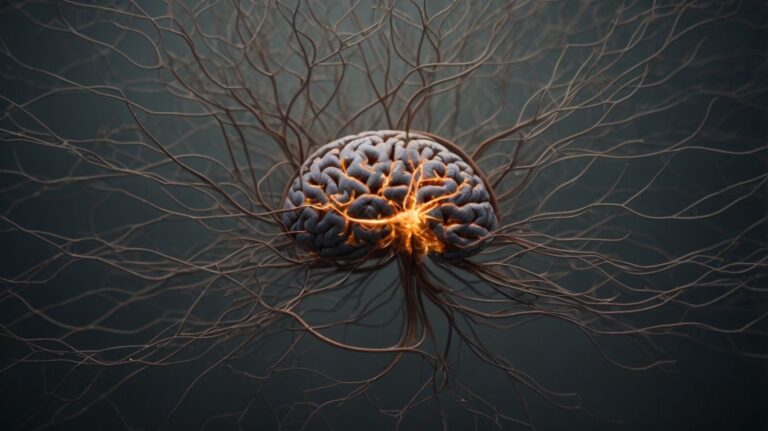Catatonia is a complex psychological condition that can have a significant impact on a person’s daily life. In this article, we will explore the symptoms of catatonia, including motor, behavioral, and psychological symptoms. We will also delve into the potential causes of catatonia, such as mental health disorders and medical conditions.
We will discuss how catatonia is diagnosed and the various treatment options available, including medications, electroconvulsive therapy, and psychotherapy. We will touch on how catatonia can be prevented and the prognosis for individuals with this condition. Join us as we explore the world of catatonia in psychology.
Contents
What Is Catatonia?
Catatonia is a complex neuropsychiatric syndrome characterized by disturbances in movements, behaviors, and psychological responses.
There are various manifestations of catatonia, ranging from a state of complete immobility to extreme agitation. Excited catatonia is marked by hyperactivity, impulsivity, and disorganized behaviors, while malignant catatonia is a severe form that can be life-threatening if not promptly treated. Common symptoms include stupor, mutism, echolalia (repetitive speech), echopraxia (repetitive movements mirroring others), waxy flexibility (maintaining body positions), and cataplexy (sudden loss of muscle tone). These movements encompass a wide spectrum, highlighting the complexity and variability of the condition.
What Are The Symptoms Of Catatonia?
The symptoms of catatonia encompass a spectrum of motor, behavioral, and psychological manifestations that vary in intensity and presentation.
Motor symptoms of catatonia, such as akinesia catatonia, are characterized by a state of immobility and reduced spontaneous movements.
Behavioral symptoms in catatonia may involve unusual posturing or assuming rigid and awkward positions, often holding them for prolonged periods.
Psychological symptoms like mutism can manifest as a lack of verbal responses, where individuals may remain silent and unresponsive in social interactions.
Recognizing these diverse symptoms is crucial for early detection and appropriate intervention in individuals affected by catatonia.
Motor Symptoms
Motor symptoms in catatonia manifest as altered movements, including waxy flexibility and stereotypic behaviors that reflect the underlying neuropsychiatric disturbances.
The concept of waxy flexibility in catatonia is characterized by the peculiar ability of individuals to maintain positions or postures set by an external force. Their limbs can be molded and hold positions for extended periods, almost as if the individual were made of wax.
On the other hand, stereotypies refer to repetitive, purposeless movements that are seen in patients with catatonia. These movements lack goal-directedness and can range from simple hand-flapping motions to more complex behaviors like rocking or pacing.
These distinctive motor manifestations play a crucial role in diagnosing catatonia as they are not typically observed in other neuropsychiatric conditions. By recognizing and understanding these unique movements, healthcare professionals can differentiate catatonia from disorders with similar presentations, facilitating accurate diagnosis and appropriate treatment.
Behavioral Symptoms
Behavioral symptoms of catatonia may include negativism, echolalia, and pronounced agitation, reflecting the complex interplay between cognitive and emotional responses.
When an individual presents with negativism, they may exhibit a resistant or oppositional attitude towards directions or attempts to make them engage in certain activities.
Echolalia, on the other hand, involves the automatic and uncontrollable repetition of words or phrases spoken by others, often without clear understanding or intent. This can significantly impair communication and social interactions.
The pronounced agitation associated with catatonia can manifest as restlessness, pacing, or even physical aggression. These behaviors not only disrupt daily functioning but also pose challenges for caregivers and healthcare professionals in managing the individual’s needs.
Psychological Symptoms
Psychological symptoms of catatonia can manifest as stupor, echopraxia, and grimacing, highlighting the intricate connections between cognitive processes and motor responses.
Stupor is a state of unresponsiveness, where the individual remains motionless and mute, often in a rigid position for extended periods.
Echopraxia involves mimicking the movements of others involuntarily, reflecting a lack of voluntary control over one’s actions.
Grimacing, characterized by facial contortions or expressions of distress, can further exemplify the disconnection between an individual’s thoughts and physical expressions.
These symptoms collectively contribute to the overall clinical presentation of catatonia, offering insights into the individual’s inner turmoil and the challenges they face in navigating the external world.
What Causes Catatonia?
Catatonia can have various causes, stemming from underlying mental illnesses, physical conditions, and neurological abnormalities that affect brain function.
When considering mental illnesses like bipolar disorder and schizophrenia, it is crucial to note that catatonia can manifest as a symptom of these conditions. In such cases, the disruptions in neurotransmitter levels and abnormal brain activity play a significant role. Physical conditions such as extreme dehydration or severe infections can trigger catatonia by impacting the body’s overall functioning and chemical balance.
Neurological abnormalities, like lesions on specific brain regions or altered connectivity between neural pathways, can lead to the characteristic motor disturbances and cognitive impairments seen in catatonic states. These combined triggers underscore the intricate interplay between Causes, mental illnesses, physical health, and neurological integrity in the complex etiology of catatonia.
Mental Health Disorders
Catatonia can be linked to various mental health disorders, including bipolar disorder, schizophrenia, and mood disorders, highlighting the intricate relationship between psychiatric conditions and catatonic symptoms.
Individuals with bipolar disorder may experience catatonia during manic or depressive episodes, exhibiting symptoms like stupor or excessive motor activity. Similarly, schizophrenia can also manifest with catatonic features such as mutism, waxy flexibility, or echolalia. Mood disorders, such as major depressive disorder or anxiety disorders, can further complicate catatonia presentation due to their impact on emotional regulation and cognitive functioning.
Medical Conditions
Medical conditions like neuroleptic malignant syndrome and extrapyramidal disorders can precipitate catatonic symptoms, underscoring the importance of recognizing the role of physical health in catatonia.
Neuroleptic malignant syndrome is a rare but serious reaction to antipsychotic medications, characterized by muscle rigidity, high fever, and autonomic dysfunction.
On the other hand, extrapyramidal disorders, such as Parkinson’s disease, can also lead to catatonic features due to disruptions in dopamine regulation.
Understanding the connection between these physical conditions and catatonia is crucial for accurate diagnosis and effective treatment strategies.
How Is Catatonia Diagnosed?
Diagnosing catatonia involves a comprehensive assessment that includes physical examinations, psychological evaluations, and adherence to diagnostic criteria outlined in the DSM-5.
Physical examinations play a crucial role in the diagnostic process as they help rule out any underlying medical conditions that may mimic catatonia symptoms. Observing the patient’s motor behavior, responsiveness, and vital signs can provide valuable clues to differentiate catatonia from other disorders.
Psychological assessments focus on understanding the patient’s thoughts, emotions, and behavior patterns. This helps in identifying any underlying psychiatric conditions or traumas contributing to catatonic symptoms.
Alignment with DSM-5 criteria ensures a standardized and accurate diagnosis by matching the observed symptoms with the established criteria for catatonia.
Physical Exam
A thorough physical examination is crucial in diagnosing catatonia, as it allows for the identification of key features such as akinesia catatonia and other physical markers associated with the condition.
Physical exams play a pivotal role in the diagnostic process of catatonia by providing valuable insights into the patient’s overall health status.
Specifically, identifying akinesia catatonia through physical assessments can help clinicians differentiate between catatonia and other disorders that may present with similar symptoms.
These evaluations are essential for ruling out underlying medical conditions that could be causing or exacerbating catatonic features.
Psychological Evaluation
Psychological evaluations play a vital role in diagnosing catatonia, uncovering key symptoms such as stupor and echolalia that are essential for accurate identification and management.
When a person presents with catatonia, the manifestation of symptoms like stupor, wherein the individual remains in a fixed and unresponsive state, combined with echolalia, the repetition of words or phrases spoken by others, can be indicative of underlying psychological conditions.
Through psychological assessments, clinicians delve into the cognitive and emotional dimensions of catatonia, allowing for a comprehensive understanding of the patient’s mental state. By evaluating responses to stimuli, speech patterns, and overall behavior, professionals can formulate tailored treatment plans that address the specific needs of individuals experiencing catatonic symptoms.
What Are The Treatment Options For Catatonia?
Treating catatonia involves a multi-faceted approach, including the use of medications such as benzodiazepines, electroconvulsive therapy (ECT), and psychotherapeutic interventions tailored to the individual’s needs.
Medications like benzodiazepines play a crucial role in managing acute symptoms of catatonia by targeting the underlying neurotransmitter imbalances. These drugs help alleviate agitation, muscle rigidity, and cognitive impairment commonly seen in catatonic states.
On the other hand, Electroconvulsive Therapy (ECT) is often reserved for cases resistant to pharmacological treatment. It induces controlled seizures to modulate brain activity and has shown significant efficacy in rapidly improving catatonia symptoms.
Additionally, psychotherapy interventions, such as cognitive-behavioral therapy (CBT), can aid in addressing the psychological components of catatonia, promoting long-term recovery and coping strategies.
Medications
Medications, particularly benzodiazepines, are commonly used in managing catatonia to alleviate symptoms and regulate abnormal movements associated with the condition.
When prescribed by a healthcare provider, benzodiazepines can help reduce the intensity of catatonia episodes by targeting the overactive central nervous system. These medications work by enhancing the effects of gamma-aminobutyric acid (GABA) – a neurotransmitter that helps calm excessive brain activity, thus easing the rigid postures and agitation seen in catatonic patients. By modulating GABA receptors in the brain, benzodiazepines play a crucial role in restoring motor stability and promoting relaxation in individuals experiencing catatonic symptoms.
Electroconvulsive Therapy (ECT)
Electroconvulsive therapy (ECT) is a valuable treatment option for catatonia, providing neuromodulatory effects that can improve symptoms, including severe agitation and stupor, through controlled induction of seizures.
ECT functions by modulating brain activity through the intentional induction of seizures. These seizures trigger changes in neurotransmitter levels and neuronal connectivity, leading to alterations in neural circuits associated with catatonic states. The controlled electrical stimulation during ECT sessions helps reset abnormal brain patterns, thereby alleviating symptoms of catatonia. ECT has shown effectiveness in cases where other interventions have failed, highlighting its significance in the management of severe catatonic symptoms.
Psychotherapy
Psychotherapy plays a crucial role in the treatment of catatonia, utilizing behavioral interventions and cognitive restructuring techniques to address underlying psychological factors contributing to the condition.
By incorporating psychotherapeutic approaches, individuals with catatonia can benefit from a tailored treatment plan that focuses on understanding and modifying maladaptive thought patterns and behaviors. Behavioral interventions such as systematic desensitization or exposure therapy assist patients in gradually relearning adaptive responses to triggers, thus diminishing episodes of catatonic states. Cognitive restructuring strategies aim to challenge and reframe distorted beliefs and perceptions that may exacerbate catatonic symptoms, promoting healthier coping mechanisms and improved overall psychological well-being.
How Can Catatonia Be Prevented?
Preventing catatonia involves effectively managing underlying mental health conditions and seeking prompt treatment for associated medical conditions to reduce the risk of developing catatonic symptoms.
Proactive measures such as regular mental health check-ups and therapy sessions can play a crucial role in detecting and addressing potential triggers of catatonia early on. Ensuring a supportive environment at home and workplace can contribute to maintaining stable mental well-being and preventing the escalation of symptoms.
- It is essential to educate oneself and close ones about the warning signs of catatonia and encourage open communication regarding mental health concerns.
- Addressing medical comorbidities promptly, such as managing chronic illnesses or adjusting medications under professional supervision, is vital to overall well-being and can significantly reduce the likelihood of experiencing catatonic states.
Managing Underlying Mental Health Conditions
Effective prevention of catatonia involves proactive management of underlying mental health conditions such as bipolar disorder and mood disorders to address risk factors and minimize the likelihood of catatonic episodes.
Individuals with mood disorders, such as major depressive disorder or anxiety disorders, may be at higher risk for developing catatonia due to the complex interplay between their mental health and neurological functioning. It is crucial for healthcare providers to tailor treatment plans that not only target the mental health conditions but also aim to prevent the manifestation of catatonic symptoms. This can involve a combination of pharmacological interventions, psychotherapy, and lifestyle modifications to provide comprehensive care.
Seeking Prompt Treatment for Medical Conditions
Timely interventions for medical conditions, including neurological disorders like neuroleptic malignant syndrome, are essential in preventing the development of catatonic states and averting potential complications.
For more information on catatonia symptoms and treatment in psychology, visit Understanding Catatonia: Symptoms and Treatment in Psychology.
Proper management of these medical comorbidities plays a crucial role in mitigating the risk of catatonic symptoms. For instance, addressing underlying neurological conditions promptly can help stabilize a patient’s neurological function, reducing the likelihood of catatonia. By recognizing the signs and symptoms early on and initiating the appropriate treatment, healthcare professionals can significantly improve the prognosis for individuals at risk of developing catatonic states. Prevention strategies, such as close monitoring and timely adjustments to medications, are vital in minimizing the impact of neurological disorders on overall health.
What Is The Prognosis For Catatonia?
The prognosis for catatonia varies depending on the underlying causes, promptness of treatment, and individual responsiveness, with many individuals experiencing significant improvement and recovery with appropriate interventions.
Factors that can influence the prognosis of catatonia include the nature of the triggers, such as psychiatric disorders, medical conditions, or substance abuse.
Timeliness in seeking treatment is crucial, as delayed intervention can prolong the duration of symptoms and potentially decrease the chances of full recovery.
Individual variability plays a significant role, with some responding well to medications and therapy, while others may require more intensive and long-term care plans.
Frequently Asked Questions
What is catatonia and why is it important to understand in psychology?
Catatonia is a psychomotor condition characterized by abnormal movements, behaviors, and postures. It is important to understand in psychology as it can be a symptom of various mental health disorders and requires specific treatment.
What are the common symptoms of catatonia?
Some of the common symptoms of catatonia include motor abnormalities such as immobility or excessive movement, rigidity, negativism, mutism, echolalia, and echopraxia. These symptoms can vary in severity and may be accompanied by other psychological symptoms.
What disorders are associated with catatonia?
Catatonia can be associated with a variety of mental health disorders such as schizophrenia, bipolar disorder, major depressive disorder, and neurodevelopmental disorders. It can also be caused by medical conditions or substance abuse.
How is catatonia diagnosed?
A comprehensive evaluation by a mental health professional is necessary for the diagnosis of catatonia. This may include a physical exam, psychological assessment, and ruling out other potential causes of the symptoms. A diagnosis is typically made based on the presence of specific catatonic symptoms and their impact on daily functioning.
What are the treatment options for catatonia?
Treatment for catatonia depends on the underlying cause and severity of symptoms. It may include a combination of medication, psychotherapy, and supportive care. Electroconvulsive therapy (ECT) has also been found to be effective in treating catatonia in some cases.
Can catatonia be prevented?
Since catatonia is a symptom of other mental health disorders, it cannot be directly prevented. However, early identification and treatment of underlying disorders may help prevent the development of severe catatonic symptoms. Maintaining good mental health practices such as stress management and seeking help when needed can also be beneficial.



